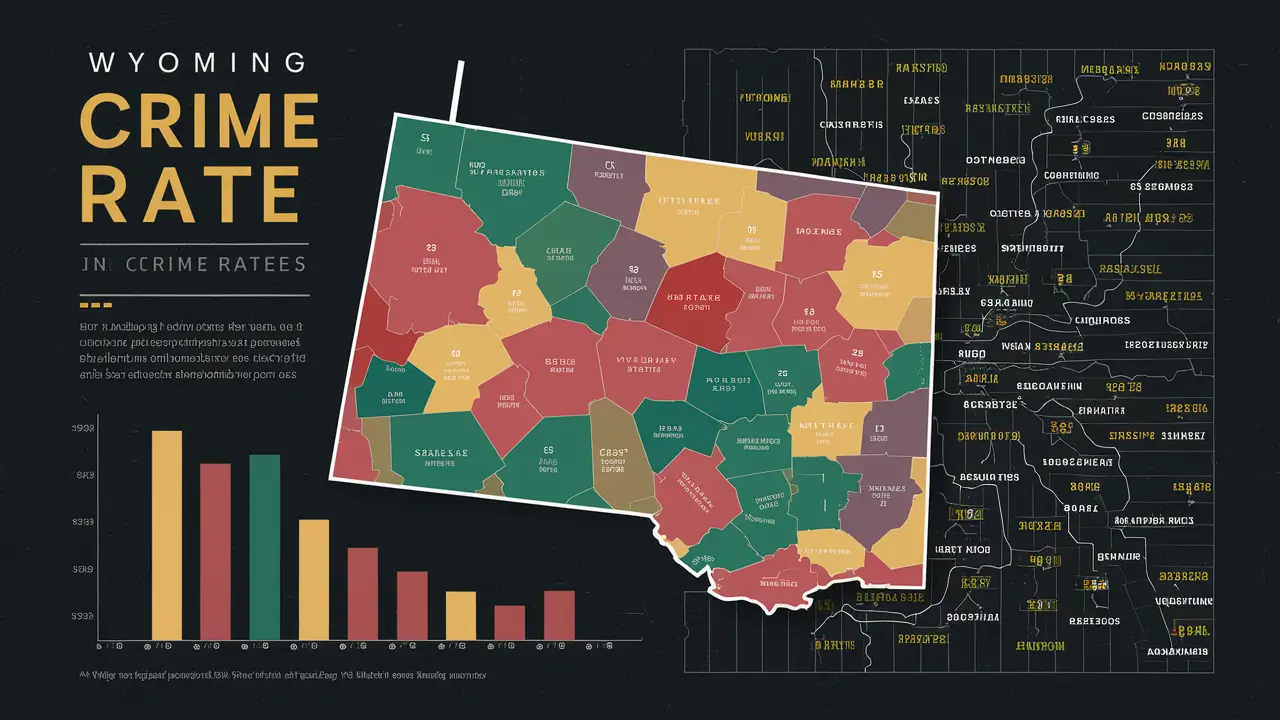Because of its low population density and enormous areas of land, Wyoming is generally considered a mostly bucolic, safe state with little crime. Still, one cannot overlook the reality that crime affects individuals in families and communities even in Wyoming. This paper offers a study of the trends in the rates of violent crime as well as property crime rates for the previous few decades about the national averages for the whole country on the crime rate in Wyoming.
Overall Crime Rate
The FBI's 2020 Uniform Crime Report shows that 13,321 incidents of property crimes and 1,559 incidences of violent crimes were documented in Wyoming respectively. This translates in part to a property crime rate of 2327 per 100000 and a violent crime rate of 272 offenses per 100000.
Regarding the average crime rate per 100,000 people, it is below the national average—399 violent crimes and 2,489 property crimes per 100,000 people. Wyoming is a rather safe state for people who live there and for visitors since its violent crime rate is only 0.2 per 100 residents and its property crime rate is 7.14 per 100 residents, hence ranking second lowest among all states.
Violent Crime in Wyoming
Though there has been some fluctuation in the previous thirty years, Wyoming remains safer than most American states in terms of violent crime statistics. At 349 per 100000 people in 1994, a period when much of the country had an increasing crime rate, violent crimes peaked. Early 2000 saw it fall; it rose between 2006 and 2012 then began to drop to the present level.
With 61% of the instances among the recorded violent crimes in 2020, aggravated assault was the most common type. After rape at 13%, robbery accounted for 26% of all violent crimes; murder accounted for 1%. The only crime with a higher incidence rate for violent crimes in Wyoming between 2019 and 2020 was rape, which stood at 174 for the year before and 179 for the later year. On the other hand, from 13 to 12 cases, two cases of murder and non-negligent manslaughter dropped.
While the other little towns used to show low violent activities, the metropolitan areas of Cheyenne, Casper, and Gillette reported the highest velocity of violent crime within the state of Wyoming in the year 2020. Still, Rawlins, Rock Springs, and Evanston were noted to have the highest per capita rates of violent offenses once population size was corrected.
Property Crime in Wyoming
Generally speaking, Wyoming's property crime rates are less than those of violent crime rates about comparable national percentages. With the peak rates occurring in the early 1990s, property crime has likewise been dropping by almost 50 percent over the past thirty years, the same as violent crimes.
With over 73% of all instances in 2020 covered, larceny theft represents the most portion of property crimes. Of all the property crimes, 15% are burglaries; motor vehicle theft accounts for 12%; arson only counts less than 1%.
Still, except for auto thefts, the whole category of property crimes reported in the state dropped between 2019 and 2020. This would suggest that, compared to last year, most of the people living in Wyoming are less likely to be vulnerable to crimes against their property.
Like violent crimes, property crime rates per capita in the state's major cities have been determined to be higher; many rural areas and small towns have fewer such incidences. But Gillette, seen as an energy boomtown, has lately joined the list of the top metros including Cheyenne and Casper with the highest level of property crime per capita.
Key Takeaways
Wyoming is sparsely inhabited and still has a lot of vacant areas, hence maintaining fairly low rates of crime—especially violent crime rates. From recent surges in the early 1990s for property crime and violent crime, total crime has also dropped overall.
Though the biggest cities in Wyoming have the most offenses as one would assume, the recent increase in crime in energy boom communities indicates that more police are needed throughout in the state of Wyoming. Officials and society leaders must keep an eye on crime trends so that they can be properly battled.
Conclusion
Based on the above-described criteria, Wyoming is still among the safest states in the United States. Still, more research on crime statistics will help to identify trends of growth in some places to improve the safety and security provided for every resident. This information can help authorities and legislators direct police activities and finances where they will be most effective, therefore identifying offense rates and trends in cities and towns both big and small.


